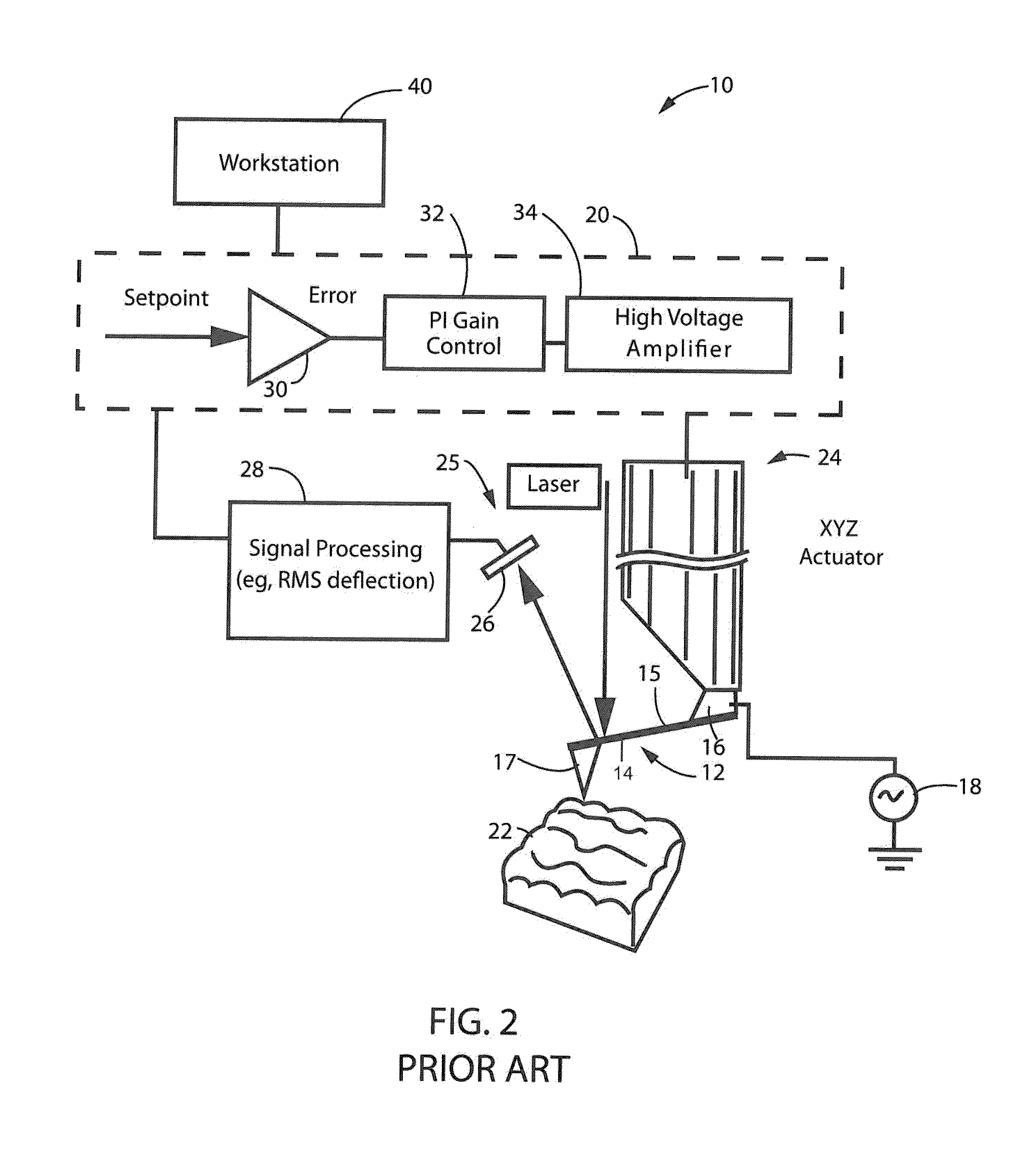Method and apparatus of physical property measurement using a probe-based nano-localized light source
a nano-localized light source and physical property technology, applied in the direction of nanotechnology, measurement devices, instruments, etc., can solve the problems of limited chemically specific information, reduced sensitivity, and difficult simultaneous spectroscopic implementation of delivering chemical specificity and sensitivity on the molecular level, so as to facilitate optically making physical property measurements on a sample, the separation of the tip is small, and the separation of the tip is less.
- Summary
- Abstract
- Description
- Claims
- Application Information
AI Technical Summary
Benefits of technology
Problems solved by technology
Method used
Image
Examples
Embodiment Construction
[0054]An improved apparatus and method of performing nano-image and spectroscopic measurements efficiently and locally on the nanoscale is shown and described. In one embodiment, sharp tipped probes employed in a conventional metrology instrument, such as an atomic force microscope (AFM), are configured to provide a top-down nano-localized light source. Rather than using far-field light which has a low density of states (essentially only one mode), the nano-localized light source of the preferred embodiments provides a localized optical dipole of high intensity. The concept is akin to Förster resonance energy transfer (FRET), which looks at the energy transfer from one excited dye molecule (chromophore) to another to measure distances between the molecules. In analogous fashion, the nano-localized light source employed in the preferred embodiments is used as on an SPM probe to provide highly efficient excitation of the sample, thus allowing the preferred embodiments to make spectros...
PUM
 Login to View More
Login to View More Abstract
Description
Claims
Application Information
 Login to View More
Login to View More - R&D
- Intellectual Property
- Life Sciences
- Materials
- Tech Scout
- Unparalleled Data Quality
- Higher Quality Content
- 60% Fewer Hallucinations
Browse by: Latest US Patents, China's latest patents, Technical Efficacy Thesaurus, Application Domain, Technology Topic, Popular Technical Reports.
© 2025 PatSnap. All rights reserved.Legal|Privacy policy|Modern Slavery Act Transparency Statement|Sitemap|About US| Contact US: help@patsnap.com



